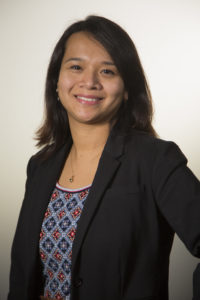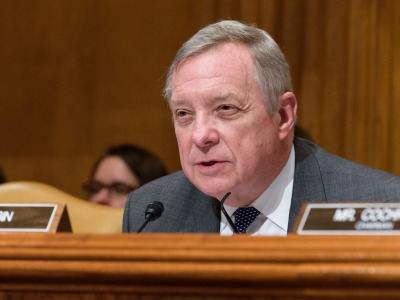The U.S. could see a shortage of nearly 120,000 physicians over the next 12 years as demand is outgrowing supply, with the stakes even higher in rural areas. One report suggests liberalizing immigration rules to make it easier for foreign-born doctors to work in rural areas, and lawmakers are proposing new inducements for rural physicians.
“We have a number of rural health care providers who are from the baby-boom generation and those providers are now retiring,” said Alana Knudson, co-director of the Walsh Center for Rural Health Analysis. “We also do not have, at the same time, a high number of newly-minted health care providers opting to practice in rural communities.”
As of January 2019, rural and partially rural areas in America accounted for 66% of the total primary care health professional shortage areas. This is compared to 34% in nonrural areas, according to a recent report from the Center for American Progress (CAP) that recommends making it easier for immigrant doctors to work in rural areas.
An April report from the Association of American Medical Colleges projects the U.S. will have shortages from 46,900 to 121,900 physicians by 2032. About 14,472 more primary care physicians are currently needed to offset the undersupply in shortage areas.
According to CAP, of a total of 130,545 doctors in the U.S. in 2017, about 30%, or 37,220, were not born in the U.S. and working on some type of visa.

Silva Mathema, CAP
But Silva Mathema, a senior immigration policy analyst at CAP, a liberal-leaning think tank, says many immigrant doctors are constantly worried about keeping their H-1B visas. H-1B is a temporary visa program that employers use to import professionals whose positions are in shortage, including doctors.
The program, which is heavily used by the tech sector, is limited to 65,000 visas a year, plus an additional 20,000 for people with a master’s degree or doctorate from an American university. H-1B holders are eligible to apply for permanent legal residency, also known as a green card.
“It is just a really sad state of affairs because they are contributing in one of the very overlooked areas of the U.S.,” Mathema said.
She said the visa is extremely difficult to get because H-1Bs have an annual cap and are usually oversubscribed. The program is also caught up in a larger debate between the White House and Congress over whether to restrict legal immigration.
Mathema said there are several things Congress can do to increase the number of immigrant doctors in rural communities. One way is to make permanent the Conrad 30 program. It allows medical doctors on J-1 visas to apply for a waiver for the 2-year residence requirement upon completion of the J-1 exchange visitor program if the doctor serves in an underserved community.
A J-1 visa is a temporary visa for people participating in programs to obtain medical or business training in the U.S.
The Conrad 30 program is currently limited to 30 physicians per state, and the program gets extended by Congress inconsistently. Mathema said that makes it tough to recruit physicians and suggests the number should be increased.
“To really get at this problem, is to remove the per country limits because that is what is creating backlogs and years and years of waiting,” Mathema said. A bipartisan bill introduced by Sen. Amy Klobuchar, D-Minn., earlier this year would extend the program through 2021. There is also a similar House bill introduced by Rep. Brad Schneider, D-Ill.
Earlier this month, Sen. Dick Durbin, D-Ill., introduced a bipartisan bill to improve health workforce shortages in rural areas with Marsha Blackburn, R-Tenn., and three other senators.
The Rural America Health Corps Act would create a new $25 million program to bolster National Health Service Corps placements and provide student loan forgiveness for doctors, dentists, behavioral health specialists, and nurse practitioners for up to five years.
“Patients across rural Illinois face challenges accessing the health care they need because of serious workforce shortages — with too few medical providers and long distances between them,” Durbin said.

Sen. Dick Durbin, D-Ill.
The current NHSC program provides up to $50,000 annually to repay student loans for primary care doctors, dentists, behavioral health clinicians, nurse practitioners, physician assistants for two years in a health professional shortage area.
The program provides some 3,100 new loan forgiveness awards each year but only 30% of NHSC participants serve rural communities.
Other senators sponsoring Durbin’s bill include, Kevin Cramer, R-N.D., Doug Jones, D-Ala., and Lisa Murkowski, R-Alaska.
The Walsh Center's Knudson said there are many reasons why physicians choose urban areas over rural areas, but one factor is that some new doctors prefer to practice where they are less likely to be required to be on call.
“A lot of our newly minted physicians are not interested in having as much call as the current generation of physicians who are retiring in rural communities,” Knudson said.
Many doctors are also concerned about finding employment for their spouses and educational opportunities for their children, she said. And older physicians have told her it is sometimes more difficult to recruit new physicians because they want to have a better work-life balance than what many older physicians had.
Keith Mueller, director of the Rural Policy Research Institute at the University of Iowa, told Agri-Pulse it’s not just physicians who are hard to find in rural areas. All health care positions are hard to keep filled, including radiology technologists as well as behavioral health positions.
For more news, go to www.Agri-Pulse.com.


